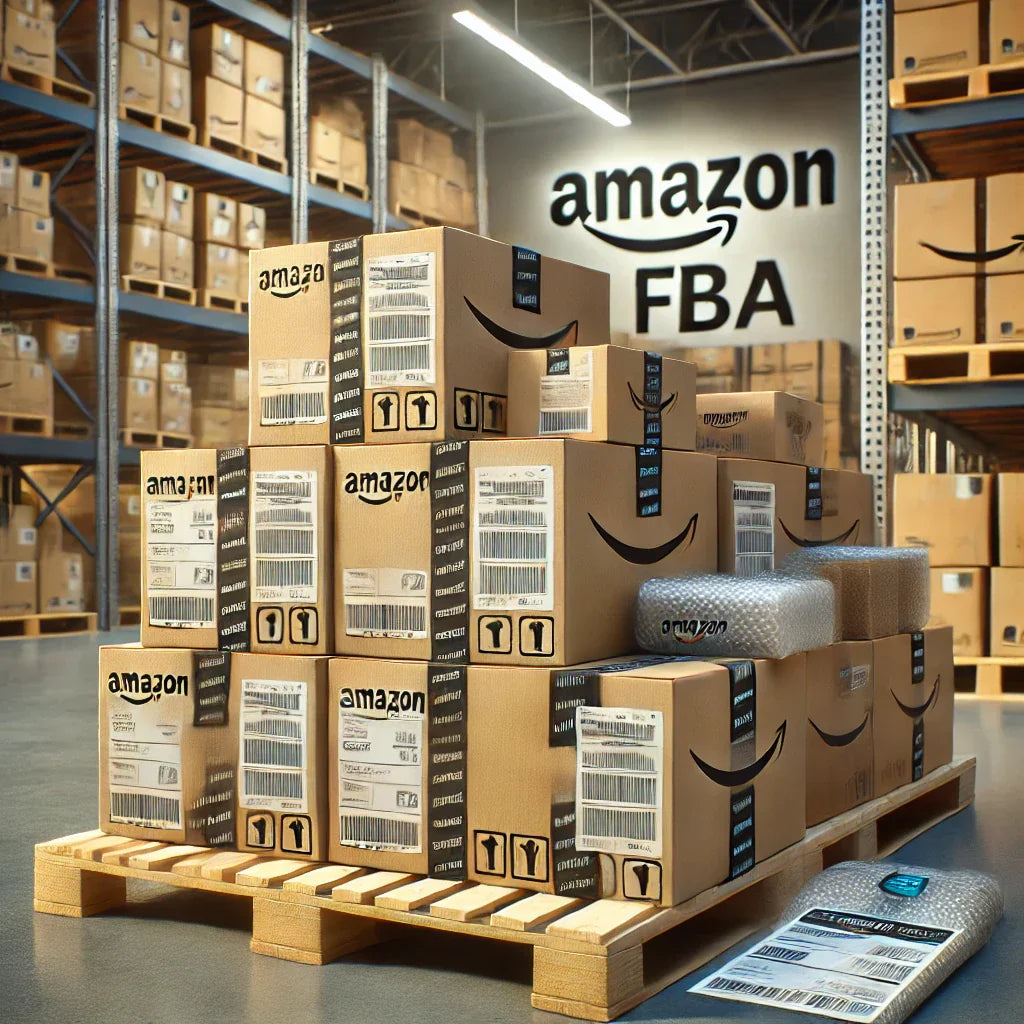In today's competitive retail landscape, efficient supply chain management is pivotal for success. Academy distribution centers stand out as hubs of strategic operations that ensure products are delivered swiftly and accurately to stores and customers alike. These centers are characterized by their advanced logistics, state-of-the-art technology, and streamlined processes, all working in tandem to achieve exceptional operational efficiency. Understanding their key features and operations can provide valuable insights into how large-scale distribution networks function, enabling businesses to emulate their successes and optimize their own systems.

Academy Distribution Centers: An Overview
Distribution centers are essential components of modern retail and e-commerce, acting as critical nodes in the supply chain that facilitate the movement of goods from manufacturers to consumers. Academy distribution centers epitomize this role by integrating advanced distribution center operations that combine efficiency, speed, and reliability. The scale and complexity of these centers are tailored to handle the expansive inventory that supports Academy's diverse product lines, including sports equipment, outdoor gear, and apparel.
The Role of Distribution Center Operations in Supply Chain Management
One of the primary objectives of any distribution center is to enhance supply chain management. This entails ensuring products are transported and stored in an organized manner, minimizing delays and optimizing space. Academy distribution centers are specifically designed to handle large volumes with minimal manual intervention. Advanced software solutions help manage inventory levels, optimize picking routes, and streamline packing and shipping processes.
Distribution center operations involve various key processes:
- Receiving: Efficient unloading and checking of incoming goods.
- Storage: Systematic arrangement of products to maximize space.
- Order Picking: Fast and accurate selection of products for shipment.
- Packing and Shipping: Securing products for transport and timely dispatch.
These processes are essential for maintaining logistics efficiency and ensuring that products reach their final destination without disruption.
Technological Integration: Driving Logistics Efficiency
In Academy distribution centers, technology serves as the backbone for enhanced logistics efficiency. Automated systems such as conveyor belts, robotic picking arms, and computerized warehouse management systems (WMS) are employed to manage day-to-day operations seamlessly. The use of predictive analytics helps to forecast demand and optimize stock levels, thereby preventing shortages and reducing excess inventory.
Warehouse management systems (WMS) are particularly crucial as they allow for real-time monitoring of stock and operational performance. This software helps managers oversee distribution center operations and make informed decisions that promote agility in the supply chain.
Key Features of Academy Distribution Centers
Several features set Academy distribution centers apart from conventional warehouses:
- Scalability and Adaptability Academy distribution centers are built to adapt to changes in market demand. This scalability ensures that the centers can handle peak periods, such as the holiday season, with ease. By incorporating modular designs and scalable software solutions, the centers can expand or contract operations as needed.
- Robust Inventory Management Inventory accuracy is a top priority in Academy’s distribution centers. Using radio frequency identification (RFID) technology and barcode scanning, employees can track products with precision. This not only improves stock control but also aids in the timely replenishment of items, which is a vital aspect of successful supply chain management.
- Energy Efficiency Sustainability is becoming increasingly important in the logistics industry. Academy has made strides to incorporate energy-saving measures in its distribution centers, such as energy-efficient lighting and climate control systems. This approach not only benefits the environment but also results in significant cost savings over time.
The Importance of Workforce Training and Safety
The efficiency of distribution center operations is not solely dependent on technology; it also requires a skilled workforce. Academy invests in training programs that equip employees with the knowledge and skills needed to operate sophisticated machinery and software. Safety protocols are also emphasized, as working in a fast-paced distribution environment presents numerous physical challenges.
Training focuses on:
- Safe equipment handling
- Use of personal protective equipment (PPE)
- Emergency response procedures
These initiatives contribute to a safer work environment and promote high morale among employees, which in turn supports overall logistics efficiency.
Streamlining Operations Through Data-Driven Insights
The role of data in optimizing distribution center operations cannot be overstated. Academy uses data analytics to monitor key performance indicators (KPIs) such as order fulfillment rates, average time per pick, and shipping accuracy. By analyzing this data, managers can identify bottlenecks and implement corrective measures.
Data-driven decision-making enhances the center’s ability to maintain a seamless flow of operations. For example, understanding peak times and inventory turnover rates allows for better staffing schedules and more efficient use of resources. This proactive approach results in minimized downtime and maximized productivity.
Challenges and Solutions in Distribution Center Operations
Operating a distribution center is not without its challenges. Issues such as labor shortages, equipment malfunctions, and supply chain disruptions can affect operations. However, Academy’s focus on continuous improvement helps mitigate these challenges.
Addressing Labor Shortages To tackle labor shortages, Academy has turned to automated solutions that reduce dependency on manual labor. Autonomous forklifts and robotic sorting systems can perform repetitive tasks, freeing up human workers for more complex roles. Moreover, flexible work policies and incentive programs help attract and retain skilled workers.
Mitigating Equipment Malfunctions Regular maintenance schedules and investments in reliable machinery ensure minimal disruption. Predictive maintenance tools that use IoT (Internet of Things) technology help identify potential issues before they become significant problems.
Navigating Supply Chain Disruptions Supply chain disruptions, such as delays in raw material availability, can hinder operations. To counter this, Academy leverages a network of suppliers and maintains buffer stock for essential items. This strategic approach enhances the resilience of the distribution centers and ensures uninterrupted service.
The Future of Distribution Center Operations
As technology advances, the landscape of distribution center operations is poised for significant changes. Innovations such as artificial intelligence (AI) and machine learning (ML) are expected to play a larger role in enhancing logistics efficiency. AI-driven algorithms can forecast demand with greater accuracy, manage stock levels dynamically, and optimize picking paths for faster order fulfillment.
Sustainability and Green Logistics
Looking forward, sustainability will continue to be a focal point for Academy and similar distribution hubs. Eco-friendly practices such as using electric delivery vehicles, reducing packaging waste, and incorporating renewable energy sources will become more prevalent. These green logistics efforts align with global sustainability goals and customer expectations for eco-conscious business practices.

Emerging Technologies in Distribution Centers
The integration of cutting-edge technology has revolutionized distribution center operations in recent years. Academy distribution centers have embraced innovations that enhance every stage of the logistics process. Here, we delve deeper into some of the key technological advancements and their implications for operational efficiency and supply chain management.
- Artificial Intelligence and Machine Learning
Artificial intelligence (AI) and machine learning (ML) are reshaping the landscape of distribution centers by offering predictive and adaptive solutions. Academy distribution centers utilize AI-powered software to forecast demand patterns, optimize inventory management, and improve order picking processes. This technology enables the system to learn from past data and adapt to new information, facilitating better decision-making and reducing human error.
Key applications of AI and ML include:
- Demand Forecasting: By analyzing historical sales data, AI algorithms can predict future product demand, allowing for proactive stock management.
- Optimized Routing: ML-driven pathfinding algorithms help determine the most efficient picking routes, minimizing travel time within the center and speeding up the order fulfillment process.
- Automation of Repetitive Tasks: AI-powered robots can take over monotonous tasks such as sorting and packaging, freeing up human workers for more complex responsibilities.
- Internet of Things (IoT) Connectivity
The Internet of Things (IoT) has become integral to the infrastructure of modern distribution centers. IoT devices are embedded in machinery and inventory systems to provide real-time tracking, environmental monitoring, and operational insights. Academy distribution centers employ IoT solutions to:
- Monitor Equipment Performance: Sensors attached to conveyor belts, forklifts, and sorting machines track performance and notify managers of potential issues, enabling predictive maintenance and preventing costly downtimes.
- Environmental Control: IoT sensors can monitor temperature, humidity, and other environmental factors to ensure optimal conditions for different types of products. This is especially important for temperature-sensitive items that require climate-controlled storage.
- Smart Inventory Management: IoT devices help track stock levels automatically, reducing the risk of human error and improving accuracy in inventory counts.
- Robotic Process Automation (RPA)
Robotic process automation (RPA) is another pivotal technology that enhances logistics efficiency by streamlining manual processes. Academy distribution centers utilize RPA for repetitive tasks such as data entry, report generation, and order processing. These automated systems can process large volumes of data at speeds far exceeding human capabilities, contributing to faster, error-free operations.
Benefits of RPA in distribution centers include:
- Reduced Labor Costs: Automating routine tasks leads to significant cost savings in terms of labor expenses.
- Enhanced Accuracy: RPA reduces the risk of errors commonly associated with manual data handling.
- Increased Productivity: By offloading time-consuming activities, employees can focus on more strategic, value-added tasks.
- Advanced Warehouse Management Systems (WMS)
The backbone of any distribution center's technology infrastructure is its warehouse management system (WMS). Academy employs advanced WMS platforms that integrate seamlessly with other logistics software and hardware. These systems help streamline operations by providing detailed insights into:
- Inventory Tracking: Real-time visibility into stock levels, including the location of each product within the facility.
- Order Processing: Automation of order selection and prioritization to meet customer delivery expectations.
- Performance Analytics: Comprehensive reporting tools that allow managers to evaluate KPIs and adjust operations accordingly.
WMS platforms contribute significantly to the agility of the distribution center by enabling quick responses to sudden changes in demand or supply chain disruptions.
Sustainability Initiatives in Distribution Centers
The emphasis on sustainability within logistics has evolved from being a trend to becoming a necessity. Academy distribution centers have adopted various eco-friendly practices that not only align with global environmental goals but also offer cost benefits.
Energy-Saving Infrastructure
Academy has invested in energy-efficient infrastructure, including LED lighting and motion sensors that reduce electricity usage. Solar panels installed on facility rooftops contribute to the energy needs of the centers, providing renewable energy sources and decreasing dependence on conventional power grids. In addition, efficient climate control systems minimize energy waste and maintain optimal working conditions for employees and product storage.
Green Packaging Solutions
Reducing packaging waste is an important part of sustainable logistics. Academy's distribution centers use recyclable and biodegradable materials for packaging and have optimized the design of shipping cartons to minimize excess material. This initiative not only reduces the environmental impact but also helps cut shipping costs by decreasing the overall weight of packages.
Reduced Carbon Emissions
Sustainable logistics practices also extend to the reduction of carbon emissions associated with transportation. Academy distribution centers contribute to this effort by partnering with eco-friendly carriers and incorporating electric vehicles into their local delivery fleets. This shift not only benefits the environment but also resonates with consumers who are increasingly conscious of a company’s environmental impact.
The Role of Strategic Location Planning
One of the overlooked yet crucial aspects of distribution center operations is strategic location planning. The placement of distribution centers plays a significant role in ensuring supply chain efficiency and minimizing transportation costs. Academy distribution centers are strategically located near major highways, ports, and urban centers to facilitate quick distribution and reduce transit times.
Advantages of Strategic Location Planning:
- Reduced Shipping Costs: Being closer to major markets decreases the distance goods need to travel, resulting in lower fuel consumption and transportation expenses.
- Improved Delivery Times: Proximity to key shipping routes enables faster delivery, meeting customer expectations for speedy service.
- Enhanced Supplier Relationships: Centers located near suppliers can facilitate more efficient inbound logistics and reduce potential delays in receiving stock.
Workforce Empowerment and Continuous Training
Despite technological advancements, the human element remains integral to the success of distribution center operations. Academy prioritizes workforce empowerment through comprehensive training programs that cover:
- Technology Use: Employees are trained to operate sophisticated machinery and use advanced software, ensuring seamless integration between human and automated processes.
- Safety Protocols: Continuous training in safety measures reduces workplace accidents and fosters a culture of caution and responsibility.
- Operational Efficiency: By teaching best practices and lean management techniques, employees contribute to reducing waste and improving the overall flow of goods.
Adapting to Evolving Consumer Expectations
In the current retail environment, consumers have come to expect fast and reliable service. Distribution centers must adapt their operations to cater to these demands without compromising on quality or efficiency. Academy addresses this by implementing agile methodologies that enable quick shifts in strategy to align with customer preferences and market trends.
Omnichannel Fulfillment
The rise of omnichannel retailing has introduced new complexities to distribution center operations. Consumers now expect to receive their purchases through multiple channels, including direct-to-consumer shipping, in-store pickups, and same-day delivery. Academy’s distribution centers have adapted to this model by developing flexible fulfillment strategies that cater to all types of orders. This approach requires careful coordination between distribution centers, retail locations, and logistics partners to maintain high service levels across channels.
Collaborative Supply Chain Networks
Collaboration within the supply chain is essential for overcoming challenges and achieving greater efficiencies. Academy distribution centers engage with various partners, including suppliers, carriers, and logistics service providers, to create a robust supply chain network. This collaborative effort ensures that information is shared in real-time, enabling proactive responses to potential issues and enhancing overall supply chain resilience.
Adapting to Seasonal Fluctuations
Seasonal demand variations can put a significant strain on distribution center operations. During peak seasons, such as holidays or special promotions, the volume of orders can surge dramatically. Academy has developed strategies to address these fluctuations:
- Flexible Workforce Management: Hiring temporary staff during high-demand periods helps manage increased workloads without overburdening the existing workforce.
- Preemptive Stocking: Anticipating popular products and stocking them in advance ensures that the distribution center is well-equipped to handle sudden demand spikes.
- Dynamic Order Prioritization: Utilizing data analytics to identify high-priority orders and adjust fulfillment strategies accordingly enables the center to maintain service standards even during busy times.
Maintaining Quality Control
Ensuring the quality of products throughout the distribution process is a key aspect of Academy's operations. Rigorous quality control measures are implemented at each stage of the distribution chain:
- Inspection upon Receiving: All incoming products undergo a thorough inspection to verify their condition and compliance with quality standards.
- Automated Quality Checks: Conveyor systems equipped with scanners and sensors perform automated checks for discrepancies in size, weight, or damage.
- Final Packaging Inspections: Before products are shipped, they are reviewed to ensure that they meet all quality requirements, minimizing the chance of returns or customer dissatisfaction.
The Future Outlook for Distribution Centers
As technology and market conditions evolve, distribution centers will continue to face new challenges and opportunities. Academy's forward-thinking approach involves ongoing investments in research and development to identify future trends and adapt accordingly. Upcoming trends include:
- Further Automation: Continued advancements in robotics and AI will likely lead to even greater levels of automation, further reducing manual intervention.
- Sustainable Innovations: Future distribution centers may incorporate even more eco-friendly practices, such as hydrogen-powered vehicles and green building designs.
- Enhanced Customer Experiences: Direct integration with customer service platforms could allow distribution centers to provide more personalized shipping and tracking information, enhancing overall customer satisfaction.

Leveraging Real-Time Data and Analytics for Operational Excellence
The use of data and analytics is paramount to maintaining and enhancing operational excellence within distribution centers. Academy distribution centers harness the power of real-time data to monitor, evaluate, and optimize every facet of their operations. This data-driven approach empowers managers to make informed decisions and proactively address potential issues before they escalate.
Real-Time Inventory Management
One of the most significant benefits of real-time data analytics is its impact on inventory management. Academy distribution centers employ advanced tracking systems that offer up-to-the-minute insights into stock levels, product locations, and order statuses. This level of transparency helps mitigate common challenges, such as stockouts and overstocking, by ensuring inventory levels are continuously balanced with demand.
Predictive Analytics for Demand Forecasting
Predictive analytics goes beyond real-time data by using historical data and machine learning algorithms to forecast future demand trends. This predictive capability enables Academy to align its distribution strategy with anticipated market shifts, ensuring that high-demand items are adequately stocked and ready for swift distribution. The following are key aspects of predictive analytics in distribution centers:
- Seasonal Trend Analysis: Identifying patterns that emerge during specific times of the year helps to preemptively adjust stock levels.
- Customer Behavior Insights: Analyzing purchasing trends allows for more targeted stocking strategies, improving customer satisfaction by ensuring the availability of popular products.
- Dynamic Resource Allocation: By predicting peak periods, Academy can allocate additional resources, such as staff and machinery, to manage surges effectively.
Optimizing Workflow with Real-Time Performance Metrics
Real-time performance metrics provide valuable insights into the productivity of various operations within distribution centers. Key performance indicators (KPIs) such as order processing times, picking accuracy, and packing efficiency are continuously monitored. This approach ensures that:
- Operational Bottlenecks Are Quickly Identified: Managers can pinpoint areas that require immediate attention, such as delayed order picking or congestion in packing stations.
- Performance Standards Are Maintained: Continuous monitoring supports adherence to pre-established performance benchmarks.
- Employee Productivity Is Enhanced: By analyzing productivity metrics, supervisors can implement targeted training or process adjustments to optimize staff output.
Enhanced Customer Experience Through Efficient Distribution
The modern consumer expects rapid and accurate service. Academy distribution centers play a crucial role in meeting these expectations by employing strategies designed to enhance the customer experience. Speed and reliability are at the heart of these efforts, supported by efficient logistics and transparent communication.
Accurate and Timely Deliveries
Achieving logistics efficiency in delivery times requires a combination of technological integration and strategic planning. Academy's distribution centers use route optimization software that ensures the fastest, most cost-effective delivery routes are selected. This not only reduces transportation costs but also guarantees timely deliveries that align with customer expectations.
Improved Order Accuracy
Maintaining a high level of order accuracy is fundamental to customer satisfaction. Academy achieves this through:
- Automated Picking Systems: Robotics and automated guided vehicles (AGVs) help minimize human error in the order fulfillment process.
- Multi-Layered Quality Checks: Products undergo checks at various stages of the distribution process to ensure that they are accurate and in optimal condition before shipment.
Transparent Order Tracking
Transparency in the order tracking process is another area where Academy distribution centers excel. Customers receive real-time updates on the status of their orders, including:
- Notifications Upon Shipment: Instant alerts when an order has been shipped.
- Tracking Capabilities: Access to real-time tracking links that provide updates on the location and expected delivery time of their package.
- Proactive Communication: Customers are informed of any potential delays and provided with alternative solutions when necessary, maintaining trust and satisfaction.
Collaboration Across the Supply Chain
Effective distribution center operations require seamless collaboration across the entire supply chain. Academy distribution centers prioritize working closely with suppliers, transportation partners, and retailers to create an integrated network that facilitates smooth product movement from source to consumer.
Vendor Management Systems (VMS)
Vendor management systems (VMS) are used to enhance communication and coordination with suppliers. These systems:
- Streamline Procurement Processes: Orders can be placed, tracked, and managed through a single platform, ensuring that timelines and stock levels are maintained.
- Improve Transparency: Suppliers receive accurate data regarding product demand, allowing them to plan production accordingly.
- Reduce Lead Times: Enhanced coordination between suppliers and distribution centers minimizes delays in receiving goods.
Third-Party Logistics (3PL) Partnerships
For specialized tasks or during peak periods, Academy distribution centers may partner with third-party logistics (3PL) providers. These collaborations are beneficial for:
- Expanding Distribution Capabilities: Leveraging the expertise and resources of 3PL partners allows for broader geographical reach.
- Enhancing Flexibility: Outsourcing specific functions, such as last-mile delivery, helps manage workload fluctuations and adapt to high-demand scenarios.
- Reducing Operational Costs: Working with 3PLs can be more cost-effective than maintaining an in-house fleet or additional warehousing space.
Sustainability in Distribution Center Practices
Environmental sustainability is becoming an increasingly important aspect of distribution center operations. Academy has committed to implementing eco-friendly practices that contribute to long-term sustainability goals while promoting cost efficiency.
Reducing Waste Through Recycling and Reusability
One of the significant strides Academy has made is in waste reduction. Distribution centers are equipped with recycling programs that ensure materials such as packaging and pallets are reused or recycled. These initiatives contribute to lowering overall waste output and align with eco-friendly corporate practices.
Eco-Friendly Transportation Solutions
In line with its sustainability efforts, Academy distribution centers utilize energy-efficient transportation methods. The fleet includes electric vehicles for short-distance deliveries and hybrid trucks for longer routes. These sustainable transportation solutions reduce the carbon footprint associated with product distribution and showcase the company's commitment to green logistics.
Carbon Offset Programs
Academy also participates in carbon offset programs that compensate for emissions generated during transportation. By investing in projects that support reforestation and renewable energy initiatives, the company can balance its environmental impact and contribute to broader sustainability efforts.
Future-Proofing Distribution Center Operations
To remain competitive and resilient in an ever-changing market, Academy continuously seeks to future-proof its distribution center operations. This involves investing in scalable technologies, exploring emerging trends, and maintaining flexibility to pivot when needed.
Scalable Technologies for Growth
Distribution centers must be equipped to scale their operations in line with business growth. Academy ensures scalability by:
- Adopting Modular Systems: Technology and storage systems that can be expanded or modified without significant disruptions.
- Cloud-Based Solutions: Implementing cloud-based WMS and data analytics tools that offer scalability and remote management capabilities.
- Investing in Robotics and Automation: Preparing for the long term by using robotics that can be reprogrammed or adapted for different tasks as operational needs evolve.
Adapting to Industry Trends
Staying informed about industry trends and consumer behavior is essential for long-term success. Academy regularly assesses market developments to ensure its distribution centers are aligned with the latest industry standards. This proactive approach allows the company to:
- Incorporate New Technologies: From AI-driven order fulfillment to blockchain for transparent supply chain tracking, adopting emerging technologies keeps operations ahead of the curve.
- Maintain Customer-Centric Services: As customer preferences change, distribution strategies must adapt to provide enhanced personalization and convenience.
- Embrace New Market Opportunities: Whether through expanding product categories or entering new markets, flexibility in operations supports sustainable business growth.
Advanced Training and Skill Development Programs
A well-trained workforce is at the heart of efficient distribution center operations. While automation and technology play significant roles, the need for skilled human intervention remains essential. Academy distribution centers have implemented comprehensive training and skill development programs to ensure that employees are not only capable of operating advanced machinery but are also empowered to contribute to continuous process improvements.
Ongoing Employee Education
Employees at Academy distribution centers undergo continuous education that focuses on several key areas:
- Technology Integration: Training programs are designed to keep employees updated on the latest technology used within the distribution center, including automated picking systems, WMS platforms, and robotics.
- Safety Training: Safety is a priority in high-paced environments. Workers receive training in equipment handling, emergency response protocols, and the use of personal protective equipment (PPE) to minimize the risk of accidents.
- Process Optimization: Employees learn best practices in lean operations and process improvements that contribute to reducing waste and enhancing productivity.
These programs ensure that employees remain adaptable to new technology and changing processes, fostering an agile workforce that can quickly respond to operational needs.

Cross-Training for Workforce Flexibility
Cross-training is another significant initiative within Academy’s distribution centers. This practice prepares employees to handle multiple roles, providing greater flexibility during high-demand periods or unexpected staff shortages. For example:
- Multi-Role Capabilities: Workers trained in both order picking and packing can shift between tasks as needed, maintaining the flow of operations without interruption.
- Enhanced Job Satisfaction: Employees often find greater job satisfaction when they possess a diverse skill set and can contribute to different aspects of the operation, leading to lower turnover rates.
- Improved Problem Solving: Cross-trained employees can approach challenges with a broader understanding of the entire operation, leading to faster and more effective solutions.
Ensuring Employee Well-Being
Employee well-being is a key focus area in ensuring sustained productivity. Academy distribution centers have developed initiatives to support both physical and mental health, recognizing the demanding nature of warehouse work:
- Ergonomic Solutions: Workstations are designed with ergonomics in mind to minimize physical strain on employees. Adjustable packing tables, cushioned floor mats, and anti-fatigue solutions contribute to better comfort and fewer work-related injuries.
- Wellness Programs: Mental health resources, fitness challenges, and relaxation areas are made available to help employees recharge and manage stress effectively.
Enhancing Productivity with Ergonomics and Automation
The combination of ergonomics and automation in distribution centers is a game-changer for operational efficiency. Academy distribution centers prioritize creating an environment where human capabilities and automated systems complement one another:
- Ergonomically Designed Workflows: Picking and packing stations are set up to minimize unnecessary movements, reducing fatigue and improving efficiency.
- Collaborative Robots (Cobots): These robots work alongside human workers to handle heavy lifting, repetitive tasks, and other physically demanding jobs. Cobots improve productivity while reducing the risk of musculoskeletal disorders among employees.
- Voice-Picking Technology: Hands-free picking solutions guided by voice commands allow employees to work faster while maintaining accuracy, further streamlining the picking process.
Continuous Improvement Culture
A culture of continuous improvement underpins the operational strategy of Academy distribution centers. Employees are encouraged to participate in feedback loops and share insights on potential process enhancements. This culture is supported through:
- Kaizen Initiatives: Small, incremental changes suggested by employees and management can lead to substantial improvements over time.
- Regular Training Updates: Training programs are refreshed periodically to include new techniques, technological updates, and feedback from workers.
- Employee Recognition Programs: Recognizing and rewarding employees for their innovative contributions helps maintain high morale and motivates continuous engagement in the improvement process.
Leveraging Blockchain for Supply Chain Transparency
Transparency is becoming a non-negotiable element in modern supply chain management. Academy distribution centers are exploring blockchain technology to provide more robust supply chain transparency and security. Blockchain's decentralized ledger system ensures that every transaction or movement within the supply chain is recorded in an immutable way, offering significant advantages:
- Enhanced Traceability: Products can be traced back to their origin with precision, allowing for quick identification of quality issues or recalls.
- Increased Trust: Suppliers, retailers, and consumers benefit from the added trust that comes with transparent, tamper-proof records.
- Streamlined Compliance: Regulatory compliance becomes simpler with verifiable, time-stamped records for all activities, aiding in audits and adherence to standards.
Blockchain in Distribution Operations
In the context of distribution centers, blockchain technology is particularly valuable for:
- Inventory Verification: Ensuring that inventory data is accurate and synchronized across different stakeholders in the supply chain.
- Supplier Accountability: Holding suppliers accountable for delivering goods that meet predefined standards and deadlines.
- Fraud Prevention: Reducing risks associated with counterfeit products entering the supply chain, as every item can be traced back through its verified history.
The Role of Artificial Intelligence in Decision-Making
Artificial intelligence (AI) is not only used for automating tasks but also plays a crucial role in decision-making processes within Academy distribution centers. Advanced AI algorithms analyze vast amounts of data to recommend strategies for optimizing various aspects of the distribution process:
- Route Optimization for Shipping: AI helps calculate the most efficient delivery routes based on factors like traffic, weather conditions, and delivery time windows.
- Dynamic Stock Replenishment: Machine learning models predict stock depletion rates and trigger automatic reorder processes to prevent stockouts.
- Labor Allocation: AI assists in staffing by analyzing workload projections and determining the optimal number of workers required to maintain efficiency.
Sustainability Metrics and Reporting
Sustainability initiatives are only as effective as the ability to measure them. Academy distribution centers leverage software tools that track key sustainability metrics such as energy consumption, waste output, and carbon emissions. These metrics provide insights that are crucial for:
- Continuous Improvement: Identifying areas where further energy savings can be achieved.
- Compliance Reporting: Ensuring that the company meets environmental regulations and sustainability commitments.
- Stakeholder Transparency: Providing detailed sustainability reports to stakeholders reinforces Academy's commitment to eco-friendly practices.
Emergency Preparedness and Disaster Recovery
Robust emergency preparedness plans are essential for minimizing disruptions to distribution center operations. Academy distribution centers have comprehensive disaster recovery strategies in place to address a variety of potential scenarios:
- Natural Disasters: Measures include the reinforcement of building structures, backup power systems, and pre-planned evacuation routes.
- Cybersecurity Threats: With the increasing reliance on digital systems, cybersecurity protocols are strengthened to protect against data breaches and ransomware attacks.
- Supply Chain Disruptions: Contingency plans involve having backup suppliers and alternative logistics routes to ensure that operations can continue with minimal interruptions.
Continuous Technological Upgrades
To maintain a competitive edge, Academy distribution centers regularly update their technological infrastructure. These upgrades include:
- Software Patches and Updates: Ensuring that WMS and other critical systems are operating on the latest versions to benefit from improved features and security enhancements.
- Adoption of New Tools: Experimenting with emerging technologies such as augmented reality (AR) for training and maintenance tasks, helping employees visualize step-by-step guides and instructions more intuitively.
- Feedback-Based Implementations: Technology investments are guided by employee and manager feedback, ensuring that tools meet real operational needs and enhance productivity.

Conclusion
Academy distribution centers exemplify what efficient supply chain management should look like, marked by sophisticated technology, robust processes, and a well-trained workforce. By focusing on logistics efficiency and embracing continuous improvement, these centers can adapt to evolving demands and overcome operational challenges. As distribution centers integrate more advanced technologies and sustainable practices, they will continue to play an essential role in modern commerce.
Read More
- Understanding Distribution Centers: Core Functions and Benefits
- The Role of Regional Distribution Centers in Modern Supply Chains
- DHL Distribution Centers: Global Logistics at Scale
- The Advantages of Using 3PL Distribution Centers for Businesses
- How Distribution Centers Enhance Efficiency in Warehousing and Logistics
- Choosing the Right Distribution Center for Your Business Needs







